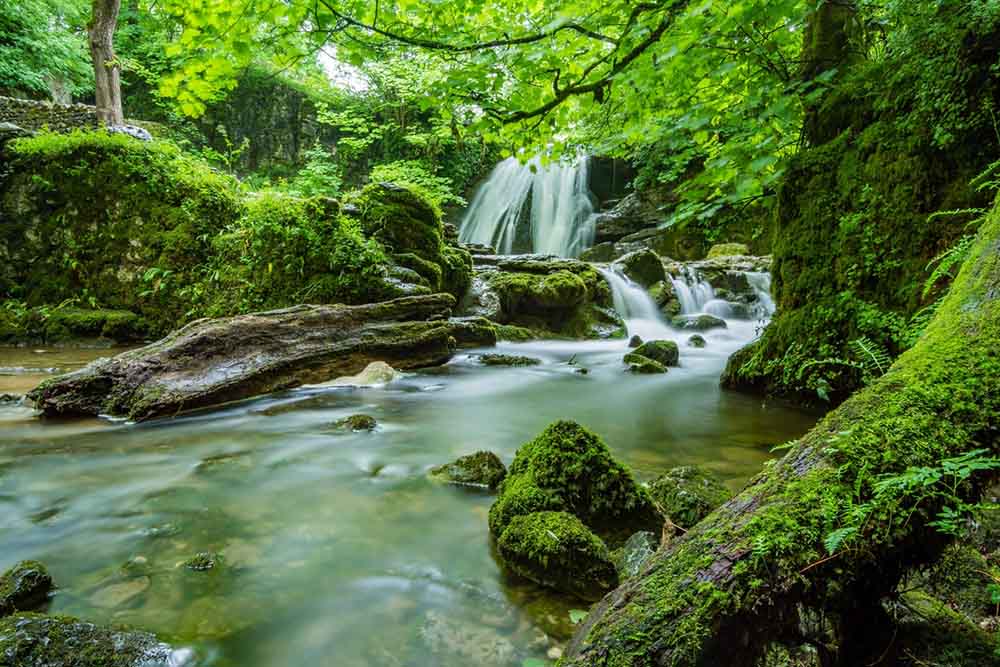Stormwater runoff is among the fastest growing sources of waterway pollution in the United States. In natural areas, soil and plants help absorb rainfall and create less runoff. Cities and towns, however, tend to have an abundance of paved surfaces that are impervious to water. When it rains, the excess water becomes a slurry of pollutants as it flows through gutters and down streets picking up synthetic fertilizers, herbicides, pesticides, oil, gasoline, dirt and trash. Eventually, these pollutants impact the water quality of our local streams and rivers, which then flow into larger rivers, lakes, and oceans.
In excess, nutrients found in synthetic fertilizers, like nitrogen and phosphorus, can trigger explosions in the growth of algae, known as algal blooms, which consume oxygen and kill marine life. Additionally, sediments like sand and soil particles, also collected by stormwater runoff, have an ecological impact. They make the water cloudy and restrict the amount of sunlight that reaches bottom-dwelling aquatic life like underwater grasses, which provide food and habitat for a variety of marine species.
So, what can we do to help curb stormwater runoff?
Look to Nature
Chesapeake Bay, the country’s largest estuary and watershed for six states—including Washington DC—is a model for a variety of ways to address the issue of excessive stormwater runoff with nature-based solutions such as green roofs, landscaped bioswales, rain gardens, and restored wetlands. In urban and suburban areas, this ‘green infrastructure’ helps to absorb stormwater naturally, reducing the level of pollutants entering regional waterways, and making landscapes more resilient to flooding triggered by extreme weather events.
In the nation’s capital, The Nature Conservancy (TNC) is collaborating with the Catholic Archdiocese of Washington on a first-of-its-kind green infrastructure project at the historic Mount Olivet Cemetery to slow stormwater runoff into the Anacostia River, a tributary of Chesapeake Bay. So far, the project has resulted in the removal of more than 33,000 square feet of paved surfaces and the addition of 250-plus trees. The property now retains about 5.4 million gallons of stormwater per year.
In Maryland, TNC is working with federal and state partners to restore floodplain connectivity to a nine-mile stretch of the Pocomoke River, which was dredged and channelized in the mid-20th century. This restoration will filter more than 67,000 pounds of nitrogen, 22,000 pounds of phosphorus, and 32,000 pounds of sediment every year, and prevent the pollutants from reaching the Chesapeake Bay. The project is one of the largest ecological restoration projects in Maryland’s history.
Conserving natural landscapes such as farms and forests, which absorb and filter rainwater, and provide a pollutant-filtering buffer for local waterways is a top priority in the Chesapeake Bay watershed area as well. The nonprofit Potomac Conservancy has preserved vital upstream lands in Virginia and West Virginia with conservation easements targeting priority areas, including the forests of White Horse Mountain in West Virginia and the Back Creek Watershed in Virginia’s Shenandoah Valley.
What’s Next?
Plans for modernizing and rebuilding America’s infrastructure often involve expanding the built environment and adding ‘gray infrastructure’ like storm drains and water treatment plants. Nature-based solutions are often more cost effective than traditional water management systems and can make communities more resilient to climate change. Green infrastructure can also provide a wide array of ecological benefits, such as creating habitat for native wildlife, improving air quality, offering opportunities for outdoor recreation, and helping to reduce the heat island effect in urban areas, a phenomenon in which impervious surfaces like paved streets and parking lots trap heat and raise temperatures.
If you’re interested in learning more about clean water initiatives, please check out these EarthShare nonprofit partners and learn about their work: The Nature Conservancy, American Rivers, and National Forest Foundation.




